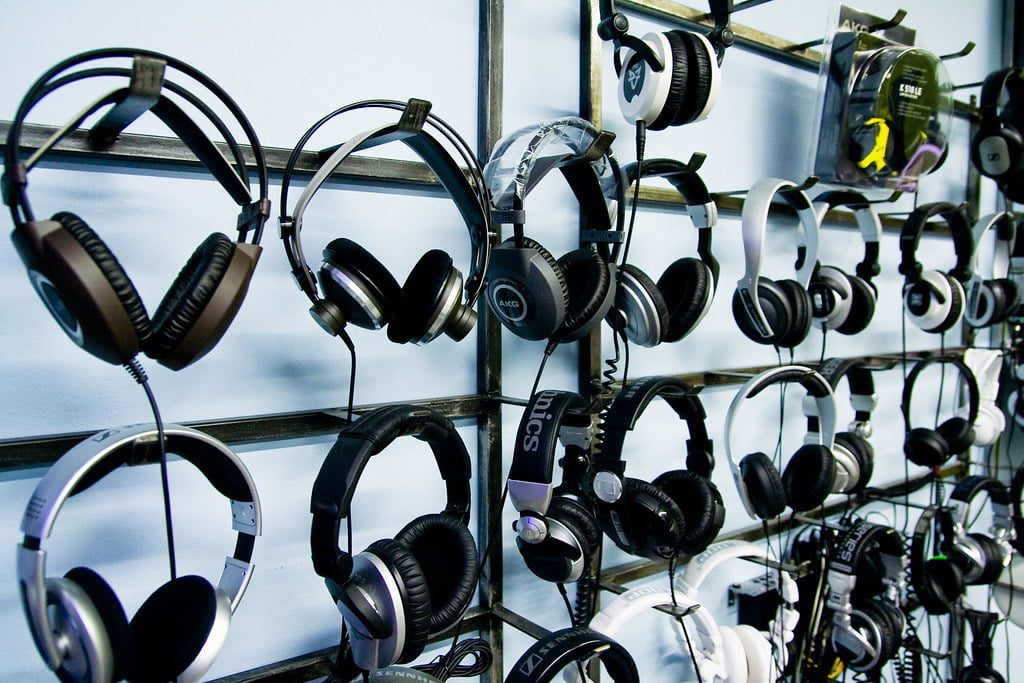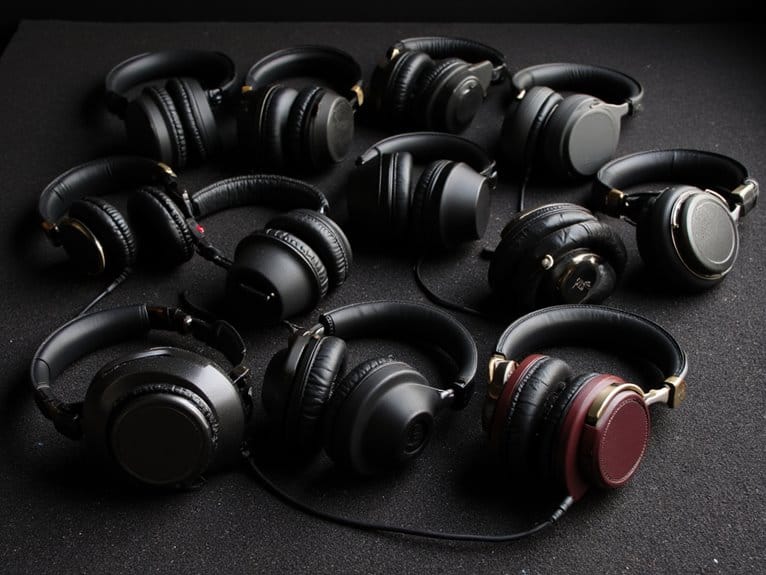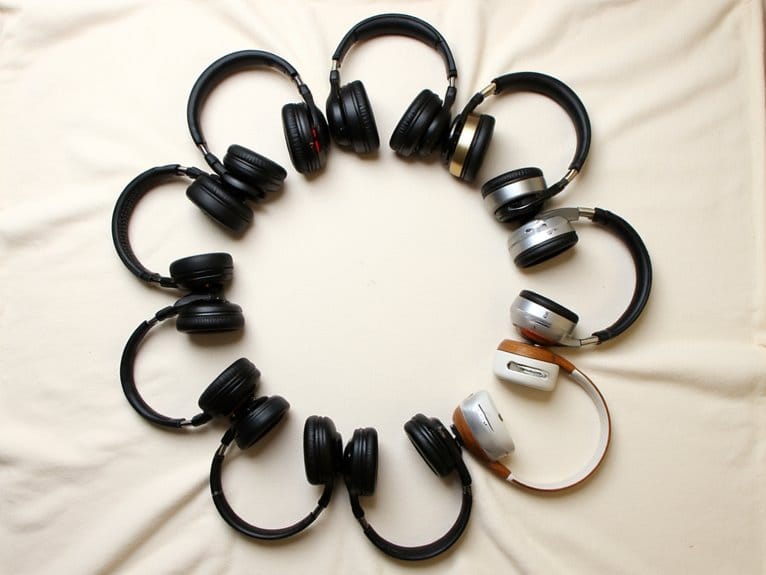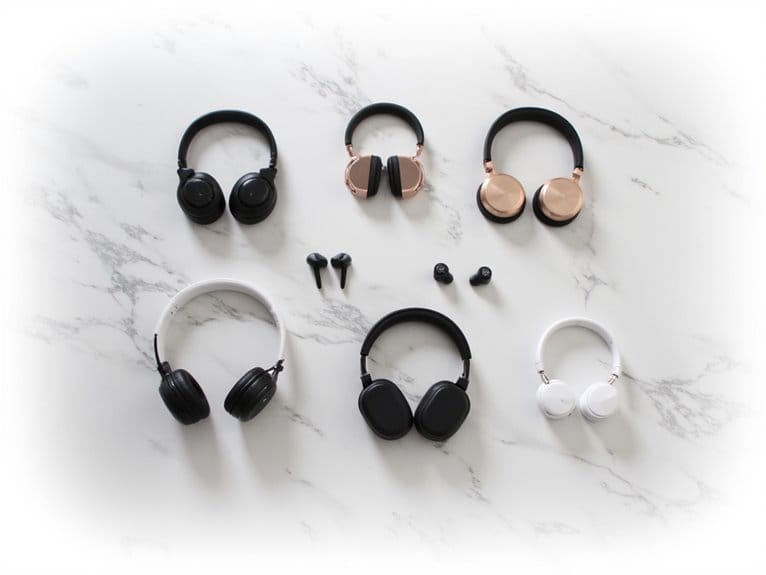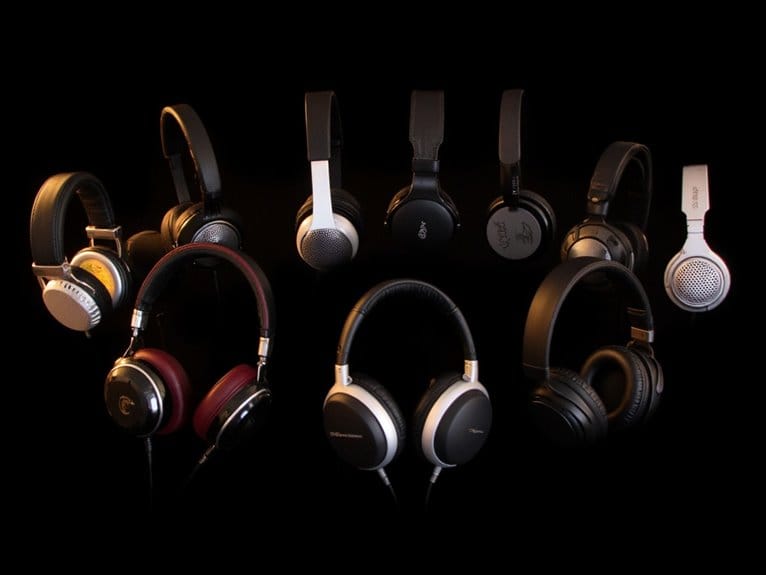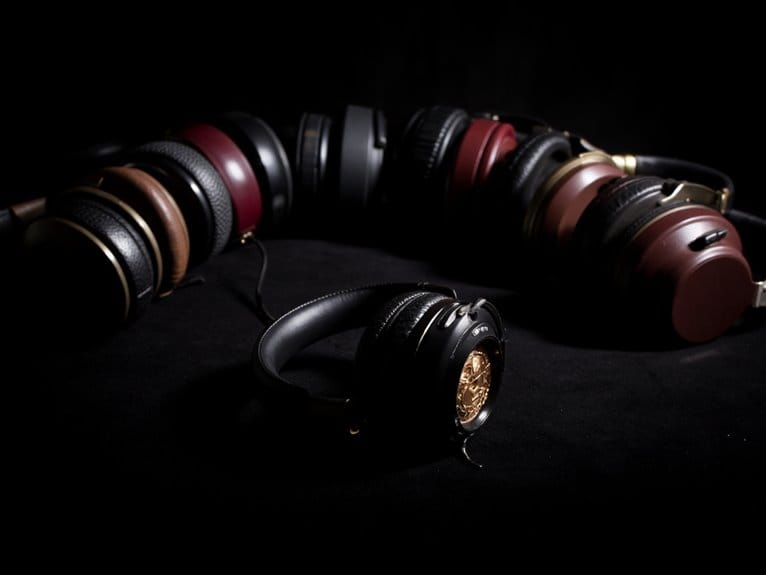Closed-Back Vs. Open-Back Headphones: Pros and Cons
When comparing closed-back and open-back headphones, I’ve found that closed-back ones excel in noise isolation and portability, making them suitable for noisy environments. On the other hand, open-back headphones offer a wider soundstage, natural sound quality, and enhanced comfort for long listening sessions. The choice between them depends on factors like where you plan to use them and the type of listening experience you seek.
We are supported by our audience. When you purchase through links on our site, we may earn an affiliate commission, at no extra cost for you. Learn more.
Physical Differences
Comparing closed-back and open-back headphones, the physical differences between the two primarily stem from the design of their ear cups and how they interact with the drivers. Closed-back headphones feature ear cups that are fully sealed, isolating the driver inside. This closed design prevents sound from escaping and ambient noise from entering, offering better noise isolation for the listener. In contrast, open-back headphones have ear cups with vents or grills that allow air to freely pass around the drivers. This open design enables air and sound to move more naturally, providing a more spacious and open sound experience.
The closed-back design of headphones creates a confined space within the ear cups, which helps in blocking out external noises, making them ideal for use in noisy environments or for critical listening where distractions need to be minimized. On the other hand, the open-back design of headphones allows ambient noise to mix with the audio being produced, resulting in a more natural sound that resembles listening to speakers in a room rather than having sound directly in or on your ears. This design choice impacts the overall listening experience, with closed-back headphones focusing more on noise cancellation and isolation, while open-back headphones prioritize a more open and immersive sound quality.
Advantages of Open-Back Headphones
Open-back headphones offer distinct advantages such as a wider soundstage that provides a more immersive listening experience. The natural sound quality they deliver enhances audio clarity, transparency, and resolution, setting them apart from closed-back designs. Additionally, their design often makes them more comfortable for extended periods of use, making them a preferred choice for audiophiles and professionals seeking superior sound reproduction.
Soundstage Benefits
With open-back headphones, the listener is immersed in a spacious and detailed audio environment due to the wider soundstage they provide. The expanded soundstage of open-back headphones enhances the immersive audio experience by allowing sound to disperse naturally, creating a more realistic and open sound presentation. This design fosters a more natural sound, as the audio is not trapped inside the ear cups, resulting in improved clarity and transparency. The enhanced dynamics of open-back headphones are a direct result of the broader soundstage, delivering better performance, especially at higher volume levels. Additionally, the reduced resonances and unwanted noise contribute to a cleaner and more detailed audio output, further emphasizing the benefits of open-back headphones for those seeking a high-fidelity listening experience.
Natural Sound Quality
Immersed in a spacious and detailed audio environment, open-back headphones offer a natural sound quality that enhances clarity, transparency, and resolution for a superior listening experience.
- Open-back headphones provide a more natural sound with improved clarity, transparency, and resolution.
- Sound in open-back headphones is more spacious and detailed due to sound firing both ways.
- Reduced resonances and unwanted noise contribute to the superior sound quality of open-back headphones.
- Open-back headphones offer better dynamics and performance at higher volume levels.
- The wider soundstage and enhanced air circulation of open-back headphones contribute to their superior sound quality.
Comfortable for Long Use
Enhancing comfort during extended listening sessions, the design of open-back headphones prioritizes airflow around the ears to minimize heat accumulation and discomfort. With better air circulation, these headphones reduce heat build-up, making them comfortable to wear for prolonged periods. Users often experience less ear fatigue and pressure due to the breathable design that promotes a cooler environment around the ears. The lightweight design of open-back headphones adds to their comfort, allowing for extended use without causing strain on the head or neck. This comfort makes them ideal for critical listening sessions where long durations of wearing headphones are necessary to analyze audio details effectively.
Advantages of Closed-Back Headphones
Closed-back headphones excel at providing superior noise isolation by creating a sealed environment within the ear cups. This feature makes them ideal for use in public spaces or noisy environments where external noise needs to be minimized. Here are some advantages of closed-back headphones:
- Enhanced Noise Isolation: By sealing off the ear cups, closed-back headphones effectively block out external noise, allowing you to focus on your audio without distractions.
- Stronger Bass Response: Closed-back headphones often deliver a more robust bass response compared to open-back designs, providing a richer audio experience, especially for bass-heavy music genres.
- Solid Sound Experience: The sealed environment created by closed-back headphones results in a more controlled sound output, producing a more immersive and consistent audio experience.
- Compatibility with Advanced Technologies: Closed-back headphones can easily integrate features like wireless connectivity and noise-cancelling technology to enhance user convenience and overall listening experience.
- Ideal for Public Spaces: Their ability to block out external noise makes closed-back headphones a popular choice for use in public spaces, such as offices, cafes, or while commuting, where minimizing background noise is essential for enjoying music or focusing on work.
Sound Quality and Comfort Considerations
When contemplating sound quality and comfort in headphones, it’s important to weigh the benefits of sound isolation and the various fit and cushioning options available. Sound isolation is a pivotal factor in enjoying music without external disturbances, while cushioning and fit can greatly impact comfort during long listening sessions. Understanding how these elements interact can help users choose the headphones that best suit their needs. Additionally, for professionals and enthusiasts alike, headphone comfort in studio sessions is crucial, as it allows for extended periods of use without discomfort. Choosing headphones with adjustable headbands and ample padding can enhance not only sound isolation but also overall enjoyment during intricate mixing or mastering tasks. Ultimately, investing in high-quality headphones that prioritize both sound and comfort can lead to a more satisfying auditory experience.
Sound Isolation Benefits
The superior sound isolation provided by closed-back headphones contributes greatly to both the sound quality and comfort of the listening experience. Closed-back headphones excel in blocking outside noise and preventing sound leakage, ensuring minimal interference from external sources. This isolation enhances sound quality by delivering a more immersive listening experience with increased clarity and detail. Additionally, the design of closed-back headphones not only reduces distractions but also helps in enhancing focus, allowing users to explore further into their audio content. Furthermore, the effective noise isolation of closed-back headphones enables users to enjoy their music at lower volumes, contributing to a more comfortable and enjoyable listening session.
Fit and Cushioning Options
Considering the critical balance between sound quality and comfort, the design of headphone cushioning plays a pivotal role in guaranteeing a high-quality listening experience. Closed-back headphones often feature memory foam padding for enhanced comfort during extended use, providing a snug fit that aids in sound isolation. Open-back headphones, on the other hand, prioritize breathable cushioning materials to prevent heat buildup and maintain comfort during long listening sessions. The fit of closed-back headphones is vital for both sound quality and comfort, with adjustable headbands and ear cup rotation features allowing users to customize the fit for peak performance. When choosing between closed-back and open-back headphones, it’s essential to explore the cushioning options available to ensure a pleasant listening experience.
Noise Isolation and Portability Factors
With regards to noise isolation and portability factors, closed-back headphones excel in blocking out external sounds due to their sealed design, making them ideal for on-the-go use. The closed-back design of headphones is preferred in public spaces where noise leakage can be disruptive to others. Here are some key points to take into account:
- Sealed Design: Closed-back headphones have a sealed design that prevents sound from escaping or entering the ear cups, providing excellent noise isolation.
- Noise Isolation: Due to their closed-back design, these headphones are effective at blocking out external noises, creating a more immersive listening experience.
- Portability: Closed-back headphones are more portable than their open-back counterparts, making them convenient for traveling, commuting, or any situation where you need to block out surrounding sounds.
- Sound Leakage: The sealed design of closed-back headphones minimizes sound leakage, ensuring that your music stays private and doesn’t disturb those around you.
- Ideal for On-the-Go Use: If you need headphones for on-the-go activities, closed-back headphones are the better choice due to their superior noise isolation and portability.
Bass Performance and Weight Comparison
When comparing closed-back and open-back headphones, closed-back headphones typically deliver more impactful bass performance while open-back headphones tend to be lighter in weight. Closed-back headphones are engineered to emphasize bass frequencies, providing a punchier and more dynamic sound experience. This emphasis on bass gives closed-back headphones an advantage for genres like hip-hop, EDM, and rock where powerful low-end frequencies are essential.
On the other hand, open-back headphones prioritize a natural and clear sound presentation over heavy bass emphasis. The design of open-back headphones allows air and sound to pass through the ear cups freely, resulting in a more open and spacious soundstage. While this design choice enhances overall sound quality and detail retrieval, it often means that the bass response is less pronounced compared to closed-back headphones.
In addition to sound characteristics, the weight difference between closed-back and open-back headphones can impact comfort during extended listening sessions. Open-back headphones, being lighter in weight, are generally preferred for prolonged use as they exert less pressure on the head and ears. Conversely, closed-back headphones, while heavier, may provide a more immersive listening experience due to their better bass performance and noise isolation. Ultimately, the choice between closed-back and open-back headphones depends on individual preferences for sound signature, comfort, and usage scenarios.
Choosing the Right Headphones
When selecting the most suitable headphones, evaluate your listening environment and intended usage carefully. When choosing between open-back and closed-back headphones, it is crucial to take into account the pros and cons of each type. Here are some key factors to bear in mind:
- Listening Environment: Determine if you will be using the headphones in a quiet studio setting or a noisy environment.
- Purpose: Specify the primary use of the headphones, such as mixing, mastering, casual listening, or DJing.
- Monitoring: If you need headphones for monitoring purposes, closed-back headphones may provide better isolation and sound leakage prevention.
- Sales Engineers Consultation: Consider contacting Sales Engineers at Sweetwater for personalized recommendations based on your specific needs and budget.
- Exploring Options: Research and investigate various options available for both closed-back and open-back headphones to discover the perfect match for your requirements.

